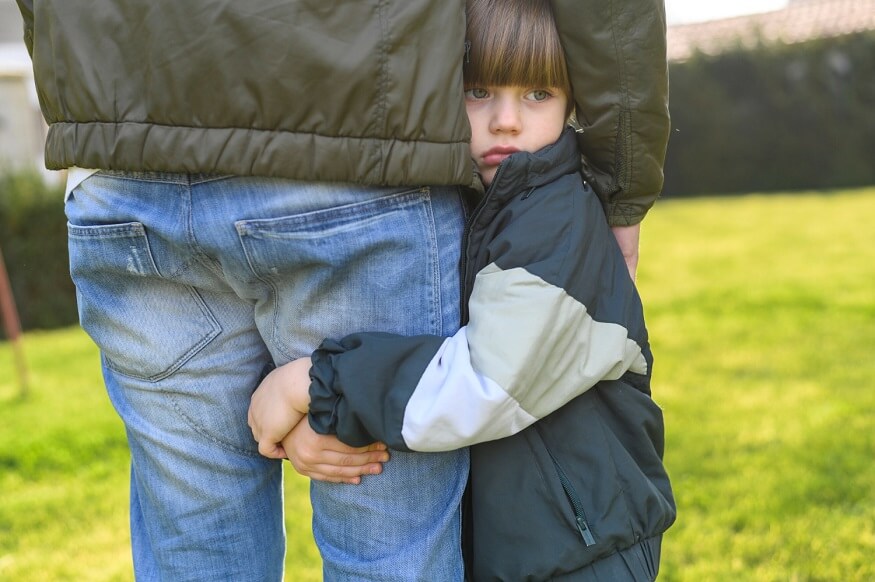Attachment Theory, posited by British psychologist John Bowlby in the mid-twentieth century, delves into the profound emotional and physical bond between a child and their primary caregiver, usually the mother. This theory asserts that the nature of early relationships lays a foundation for subsequent interpersonal dynamics and overall mental well-being. In essence, the quality of attachment during one’s formative years significantly impacts their emotional, social, and even cognitive development throughout their life.
Origins of the Attachment Theory – John Bowlby Attachment Theory
The genesis of the Attachment Theory can be traced back to Bowlby’s work with emotionally disturbed children during and after the Second World War. He posited that the disruptions and losses these children experienced in their relationships were instrumental in their emotional challenges. This observation led to a series of pioneering studies which culminated in the proposition that children come into the world biologically pre-programmed to form attachments with others to survive. Bowlby’s seminal work highlighted the innate need for children to develop a close relationship with at least one primary caregiver. He believed that the type of attachment a child developed with this caregiver could set a pattern for relationships throughout their life.
Also Read: Overcoming Empty Nest Syndrome: What It Is and How to Cope
Attachment Theory in Psychology
Attachment theory, fundamentally rooted in the domain of developmental psychology, is a lens through which one can understand the intrinsic need of humans (especially infants) to form strong emotional bonds with their primary caregivers, typically the parents. The theory has been seminal in explaining how these early relationships can have lasting impacts on personal and emotional development throughout one’s lifespan.
Types of Attachment -Bowlby attachment theory and Mary Ainsworth attachment theory
Through extensive research, mainly observational studies, psychologists Mary Ainsworth, Bowlby’s colleague, introduced distinct attachment styles commonly observed in children:
Secure Attachment: These children feel secure and confident about exploring their environment, knowing that they can return to a responsive caregiver when needed. As adults, they usually have healthy, trusting relationships. Children securely attached will happily explore an unfamiliar environment as long as their caregiver is present. Upon separation, they may become distressed but are easily comforted when the caregiver returns. Such children often grow up feeling secure and are able to form stable relationships as adults.
Avoidant Attachment: Children showcasing this style often seem indifferent or distant from their caregivers. In later life, they may struggle to form close bonds and often maintain an emotional distance in relationships. These children tend to avoid or be indifferent towards their caregiver. They might not show distress during separation and avoid the caregiver upon return. In adulthood, they might struggle with intimacy and maintain emotional distance in relationships.
Ambivalent Attachment: These children show signs of intense dependence on their caregivers and are often anxious and uncertain. This can translate to adult relationships where there’s a constant need for validation and fear of rejection. Here, children are very clingy and become deeply distressed upon separation. They might show ambivalence upon the caregiver’s return — seeking comfort but also displaying resistance. This can lead to adult relationships where there is a constant need for validation.
Disorganised Attachment: Displaying a mix of behaviours, these children may seem disoriented, showing an approach-avoidance conflict with their caregivers. Such individuals often face challenges in forming stable relationships as adults due to past traumas or inconsistent caregiving. These children exhibit a mix of behaviours and seem confused or apprehensive around their caregiver. This style might stem from past traumas or inconsistent caregiving and can result in challenges in forming stable adult relationships.
Also Read: Tips for Child Development in the First 5 Years
How Attachment Styles Affect Adult Life
Attachment during childhood does not just influence an individual’s early years. Its ramifications can be seen throughout adult life, manifesting in relationships, self-perception, and emotional well-being.
Relationships: A securely attached individual tends to form deep, lasting relationships, built on trust. They often have a positive view of themselves and others. In contrast, those with avoidant attachment might dodge intimacy, while ambivalently attached individuals could exhibit clinginess or neediness.
Self-esteem: Attachment affects an individual’s perception of themselves. Secure attachment often fosters high self-esteem, while avoidant or ambivalent attachment might lead to feelings of unworthiness or hyper-dependency.
Mental well-being: Early attachment patterns play a crucial role in predispositions to mental health challenges. For example, avoidant attachment can sometimes correlate with depressive tendencies, and ambivalent attachment might be linked with anxiety disorders.
Attachment theory has been extended to adult relationships, where it is believed that early attachment styles can influence the nature of romantic relationships, friendships, and even parenting styles. For instance:
Securely attached individuals often find it easier to trust their partners, exhibit low levels of anxiety and avoidance, and usually have satisfactory, long-term relationships.
Avoidantly attached adults may fear intimacy, finding it challenging to get close to others.
Ambivalently attached adults might be very anxious about their relationships, continually seeking reassurance and displaying jealousy.
Also Read: How does parental influence affect child development?
Can One Overcome Unfavourable Attachment Styles?
It’s vital to understand that attachment styles, while rooted in childhood, are not immutable verdicts on one’s relational fate. With introspection, therapy, and positive experiences, individuals can shift from insecure to more secure attachment styles.
Therapeutic approaches like Cognitive Behavioural Therapy (CBT) or psychodynamic therapy can aid in understanding and healing past traumas. Furthermore, forging relationships with empathetic and understanding partners can provide corrective emotional experiences.
The Attachment Theory provides a framework that elucidates how childhood experiences and relationships with primary caregivers set the foundation for future emotional, social, and psychological well-being. While the formative years are crucial, it’s heartening to note that individuals possess the ability to grow and change. Recognising one’s attachment style and the behaviours associated with it is the first step towards healing and building fulfilling, healthy relationships. Thus, understanding attachment is not just about diagnosing challenges but about fostering awareness and growth throughout life.
Also Read: Separation Anxiety in Children: Causes, Symptoms, Solutions
EuroSchool sensitises parents of toddlers and preschoolers on attachment with their children through a variety of methods. We offer a variety of parent-child activities, such as story time, music and movement, and playgroups, which can help to strengthen the attachment bond between parents and children. Parents can also meet with a child psychologist or counsellor for individual consultations to discuss their specific concerns about attachment. By providing parents with information and support, EuroSchool helps them to create a secure attachment with their children, which is essential for their healthy development.










